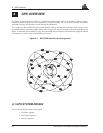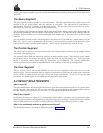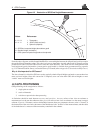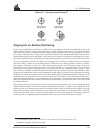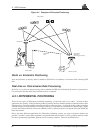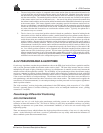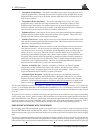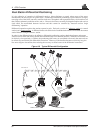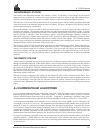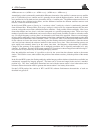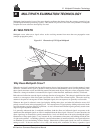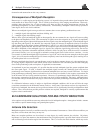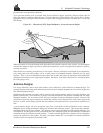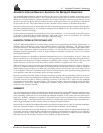
A GPS Overview
58 MiLLennium Command Descriptions Manual
Dual Station Differential Positioning
It is the objective of operating in differential mode to either eliminate or greatly reduce most of the errors
introduced by the above types of system biases. Pseudorange differential positioning is quite effective in largely
removing most of the biases caused by satellite clock error, ionospheric and tropospheric delays (for baselines less
than 50 km), ephemeris prediction errors, and
SA. However, the biases caused by multipath reception and receiver
clock offset are uncorrelated between receivers and thus cannot be cancelled by "between receiver single
differencing" operation.
Differential operation requires that stations operate in pairs. Each pair consists of a reference station
(or control
station) and a remote station.
A differential network could also be established when there is more than one remote
station linked to a single reference station.
In order for the differential pair to be effective, differential positioning requires that both reference and remote
station receivers track and collect satellite data simultaneously from common satellites. When the two stations are
in relatively close proximity (< 50 km), the pseudorange bias errors are considered to be nearly the same and can
be effectively cancelled by the differential corrections. However, if the baseline becomes excessively long, the
bias errors begin to decorrelate, thus reducing the accuracy or effectiveness of the differential corrections.
Figure A-6 Typical Differential Configuration
Remote Station
Reference Station
Modem
Radio Data Link
Differential
Corrections
Output
Differential
Corrections
Input
GPS Receiver
GPSAntenna
With Chokering



